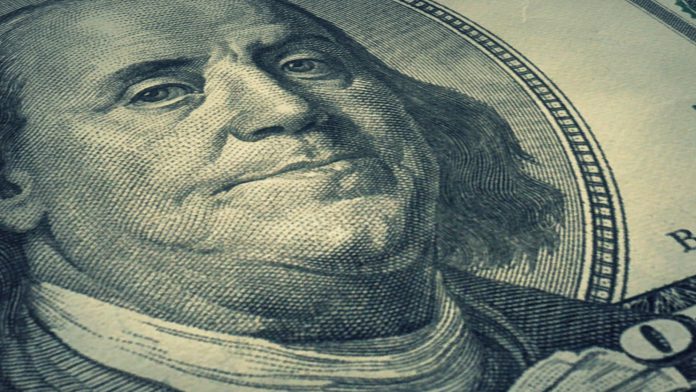For much of the past three months, investors have had their resolve tested like never before. The emergence and spread of the coronavirus disease 2019 (COVID-19) in the U.S. wound up leading to record-breaking volatility for the benchmark S&P 500, and sent the index lower by a whopping 34% in just 33 calendar days
Although we’ve rebounded quite a bit off of the March lows, the U.S. economy and labor market remain shells of where they were just three months ago, with job losses surpassing 30 million and second-quarter gross domestic product expected to come in at a year-on-year decline of more than 30%, according to many Wall Street estimates.
And yet, amid this unprecedented disruption lies hope.
You see, even though the S&P 500 has undergone 38 official corrections of at least 10% (not rounded) since the beginning of 1950, each and every one, save for the current downturn, has been completely erased by a bull market rally. While putting a bear market into the rearview mirror isn’t going to happen overnight, this data conclusively shows that buying stocks during major stock market declines is always a smart move.
What’s more, you don’t have to have Warren Buffett-type cash at your disposal to get rich by investing in stocks. With most brokerages removing the commissions associated with stock purchases and sales on major U.S. exchanges, the barriers to invest in the market have been torn down. If you have even $100 set aside that you won’t need to pay bills or for your emergency fund, here are three top stocks that you can buy to make yourself richer.
IMAGE SOURCE: GETTY IMAGES.
Livongo Health
What better company to consider putting $100 to work than my top investment idea for the month of May, Livongo Health (NASDAQ:LVGO).
Livongo is a company that’s completely revolutionizing personal healthcare. By utilizing a mountain of user data and artificial intelligence, Livongo aids users with chronic health conditions, such as diabetes or hypertension, to live healthier lives. In effect, it helps to change users’ behavioral habits so they take better care of themselves, which can certainly be a problem for diabetics.
Not only does this sound great on paper, but Livongo’s operating results demonstrate that it’s working really well. Last week, Livongo reported first quarter sales of $68.8 million, a 115% improvement from the prior-year period that topped both the company’s initial and updated guidance for Q1. It also ended March with roughly 328,000 Diabetes members, double what it had at this time last year. Enterprise clients rose by 44% to 1,252 from the sequential quarter!
The thing to realize about Livongo is that it’s just started to scratch the surface in terms of diabetes market penetration. There are 34.2 million diabetics in the U.S., according to the Centers for Disease Control and Prevention, and it doesn’t even have a full 1% of that market yet. Not to mention, an estimated 88 million people have prediabetes in the United States. Livongo Health’s growth runway is massive, with the stock looking to have genuine multi-bagger potential.

IMAGE SOURCE: SQUARE.
Square
The best way to get rich is to seek out game-changing companies, and that’s exactly what Square (NYSE:SQ) is within the financial technology space.
To be perfectly transparent, whereas Livongo actually benefited from its telemedicine tie-ins due to COVID-19, Square has not. Like most financial service companies, Square is counting on an expanding economy to drive growth. During March, the company saw a dramatic drop-off in gross payment volume (GPV) on its networks, ultimately driving first quarter EBITDA down 85% from the prior-year period. But this isn’t a first-quarter 2020 play. It’s a play on 2030 and beyond.
Perhaps the most exciting growth aspect of Square is the company’s Cash App. User count for Cash App more than tripled between the end of 2017 and the end of 2019, with the company noting new net-addition records in the month of March and April. Gross profit for Cash App, which allows users to receive and transfer money, grew by 115% from the prior-year period. As the U.S. economy recovers and Cash App grows into a larger percentage of Square’s total sales, it should become a key driver of margin expansion.
Furthermore, we’re seeing Square’s seller ecosystem evolve for the better before our eyes. Online store weekly GPV has soared in recent weeks as merchants move their businesses online. Meanwhile, a quarter of GPV is now being generated by big sellers (those with annualized GPV of $500,000 or more), up from 20% in the year-ago period. In other words, Square is attractive bigger businesses to its seller ecosystem, which should drive higher EBITDA when the U.S. economy rights itself. 
IMAGE SOURCE: GETTY IMAGES.
Speaking of revolutionary businesses, if you’re still kicking yourself for missing out on Facebook seven or eight years ago, consider social media platform Pinterest (NYSE:PINS) your chance at redemption.
Similar to Square, this is a company that typically relies on a growing economic to buoy its operating results. In the recently reported first quarter, Pinterest’s worldwide monthly active user (MAU) count jumped to 367 million from 335 million in the sequential quarter. Unfortunately, costs are driven by MAU growth, not sales growth, meaning Pinterest has incurred higher costs and weaker ad revenue of late as COVID-19 wreaks havoc on the U.S. economy.
But this isn’t a 2020 story. Over the next decade Pinterest should have two significant growth drivers working in its favor. First, the platform really seems to be resonating with overseas users. In the March-ended quarter, revenue from international users more than doubled to $35 million, with average revenue per user (ARPU) rising 76% to $0.13. Although ARPU from U.S. MAUs should continue to be substantially higher than international MAUs, the opportunity to double overseas ARPU many times over is what makes Pinterest so intriguing over the long run.
Additionally, Pinterest’s e-commerce business is in its infancy and has the potential to be a significant growth driver. If the company can continue to improve user engagement and coerce its MAUs to act on their interests by purchasing from merchants on its platform, it could build itself a healthy new source of revenue and profit.
















